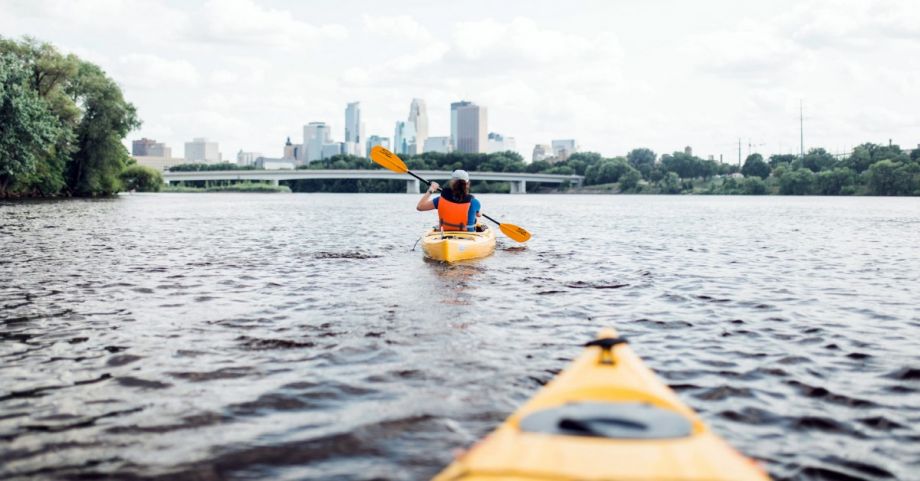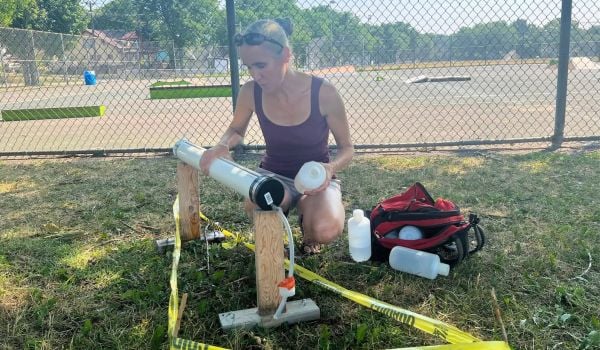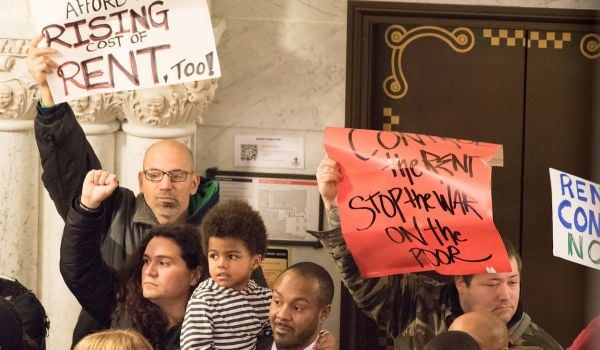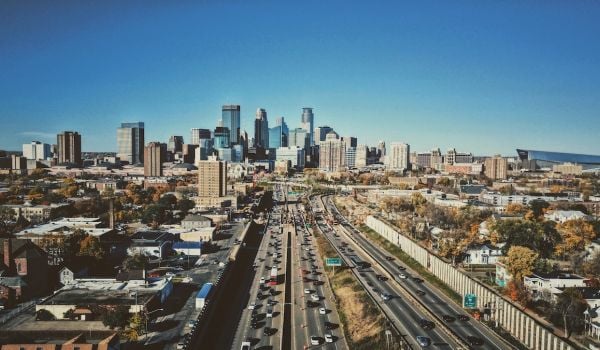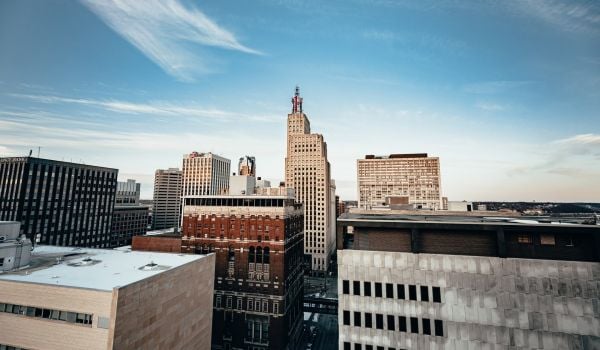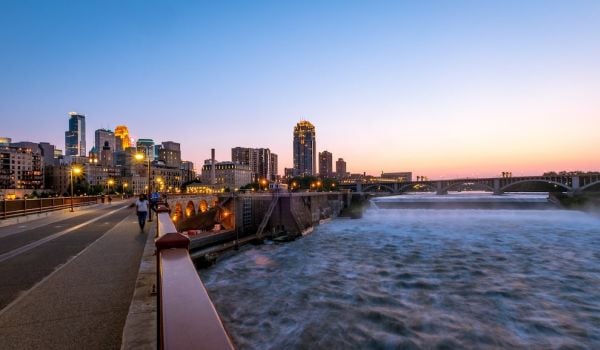The Twin Cities is home to one of the first bike-share systems in the country — and since 2016, it’s also been home to the first, and one of the only, kayak-share systems in the country.
The Mississippi River Paddleshare is a way for non-boat owners to easily enjoy the Mississippi River. A partnership between the National Park Service and the Mississippi Park Connection, the program launched in the fall of 2016 and had its first full season in 2017.
“It was all conceived by Susan Overson, a long-time planner and landscape architect here at St. Paul’s National Park Service office,” says Lauren DeGennaro of the National Park Service, who has taken over the project since Overson’s retirement in 2019. “She had this idea that focused on alternative transportation and making it easy to get around national parks without a personal vehicle, so she implemented this program as a one-way adventure on the Mississippi to get people to the river without the need for car access.”
The reservation-based system starts at $20 for a shorter trip. When it’s time to go, paddlers use the access code emailed to them when they made their reservation to unlock a kayak, map, paddle, and life jacket from a locker at one of six starting locations. Once they arrive at their destination downstream — trips range from 2 to 8.5 miles — users simply pop their kayak and gear into a locker at their end location.
“It’s important for us as an urban national park that, when we think about how we serve our community, we don’t want to just serve people who know the river and have their own kayak,” says Katie Nyberg, the executive director of the Mississippi Park Connection.
The paddleshare is a Minnesota program through and through. The lockers were manufactured in nearby Albert Lea and the kayaks came from Winona, Minnesota. The program was originally funded by an alternative transportation grant from the National Park Service as well as some funding from REI. This allows the program to require just a 50 percent rental average each season to keep it afloat. DeGennaro says the program is designed to be “available to people [and] not competitively priced. I don’t think we really have ‘competition,’ but that we’re not trying to price people out. We want them to… not be burdened with cost.”
Outdoor equipment is one of several barriers when it comes to fully enjoying public lands and amenities, especially for people of color, and the Twin Cities are no exception. Minneapolis has some of the largest income disparities between white people and people of color in the nation. Compounding that, North Minneapolis, a neighborhood largely composed of residents of color, has had its river access cut off for decades following the construction of I-94. “North Mississippi Regional Park,” in North Minneapolis, “was the first paddleshare station, and that was intentional,” says Nyberg.
Subsequent start and end points were strategically chosen based on proximity to public transportation. “We designed the stations to be near where there were existing Nice Ride stations,” Nyberg says.
The program has also been designed to address ability-related access issues as well. “Over the past two years, we’ve been able to use the boats to reach audiences that are important to us,” she adds, referring to the addition of adaptive equipment at the Pickerel Lake location in St. Paul. “We have trained staff to help people with a variety of physical abilities to get everyone on the water. We’ve invested time and money in equipment and training for staff to be able to facilitate this experience for people who are in a wheelchair, for example.”
The paddleshare has accomplished this is, in large part, thanks to a partnership with the Allina Health’s Courage Kenny Rehabilitation Center which maintains the adaptive recreation portion of the program.
Today, most of the paddleshare’s users are people who live in the Twin Cities who don’t own their own boat and a “good amount” of them, according to DeGennaro, are repeat users. The system is also used by people visiting from outside the Twin Cities who “want to do something different on vacation,” she says.
Over the few years the program has been running, the routes have changed slightly and are always under evaluation based on user feedback. The current 8.5-mile route is an extension of an earlier, shorter one that was created after users asked for one with more length. A route on the St. Paul side was recently removed, but DeGennarro says that people miss it, so she’s considering bringing it back.
Before COVID-19, there were two time slots, a morning and an afternoon, available for rentals each day, but that’s now down to one in order to give the company in charge of rebalancing the equipment the ability to thoroughly clean everything after each use. Surprisingly, users have so far preferred this system. “Now it’s a pretty open system. You just have to pick up the boat any time after 11 a.m. and have it back by 5 p.m.,” DeGennarro says. “It’s a more flexible window that gives people more time to paddle and make stops.” She also touts the kayaking as an ideal pandemic activity since you’re naturally spread out on the water.
To pull off something like this, but DeGennaro and Nyberg cite the importance of partnerships. “It’s a lot of good will and communication,” Nyberg says. “I get a lot of questions from other cities with river systems around the country, places like the Chesapeake Bay, or other natural places that want to do this,” she adds. The biggest piece of advice she gives? “You need to have a plan for how you’re going to have a system in place, then a whole plan [for] how it’s going to operate and progress over the long term.”
This story is part of The Power of Parks, a series exploring how parks and recreation facilities and services can help cities achieve their goals in wellness, conservation and social equity. The Power of Parks is supported by a grant from the National Recreation and Park Association.

Cinnamon Janzer is a freelance journalist based in Minneapolis. Her work has appeared in National Geographic, U.S. News & World Report, Rewire.news, and more. She holds an MA in Social Design, with a specialization in intervention design, from the Maryland Institute College of Art and a BA in Cultural Anthropology and Fine Art from the University of Minnesota, Twin Cities.
Follow Cinnamon .(JavaScript must be enabled to view this email address)

